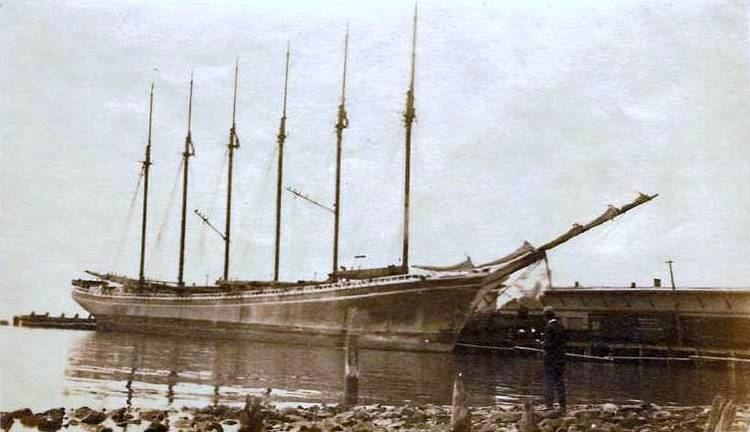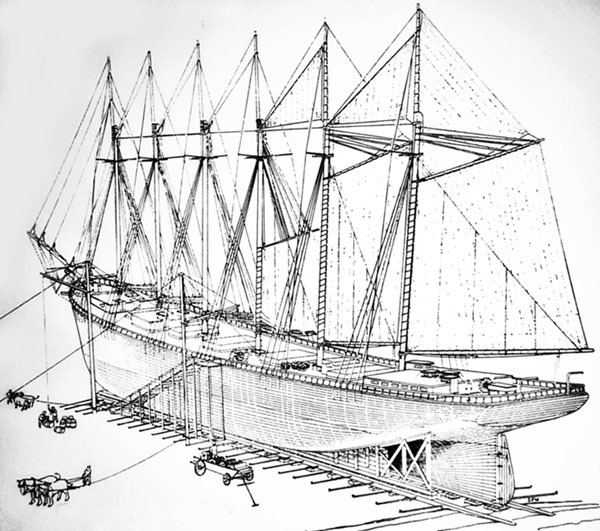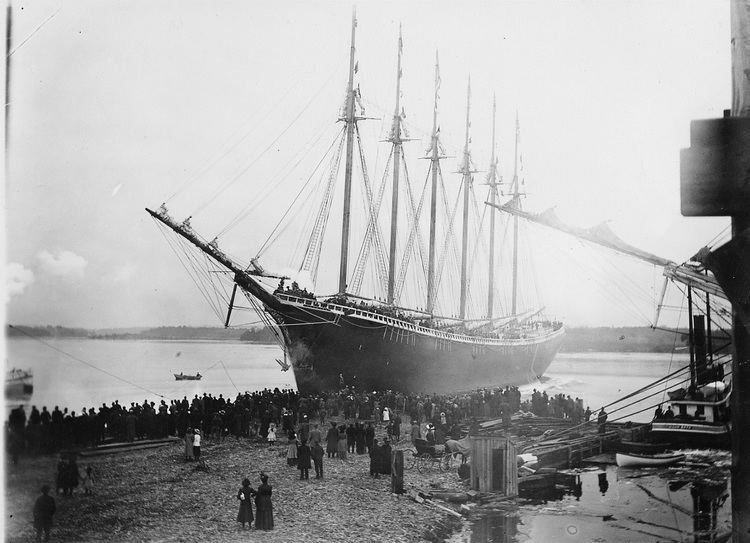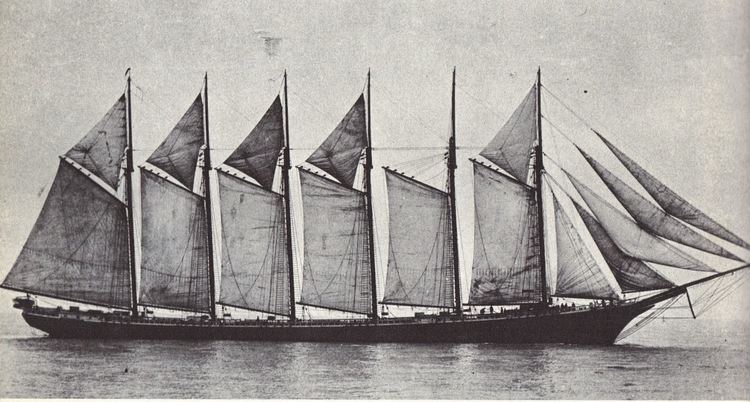Draught 30.4 ft (9.3 m) Length 137 m Draft 9.27 m Depth of hold 33 ft (10 m) | Beam 50.1 ft (15.3 m) Propulsion Sail Launched 15 December 1909 | |
 | ||
Tonnage 3,730.54 gross register tons (GRT), 3,036.21 NRT Displacement 10,000 short tons (9,100 metric tons) approx. Speed 16 knots (30 km/h; 18 mph) Fate Foundered on 11 March 1924 | ||
Wyoming was a wooden six-masted schooner, the largest wooden schooner ever built. It was built and completed in 1909 by the firm of Percy & Small in Bath, Maine. Wyoming was also one of the largest wooden ships ever built, 450 ft (140 m) from jib-boom tip to spanker boom tip, and the last six-masted schooner built on the east coast of the US.
Contents

Because of its extreme length and wood construction, Wyoming tended to flex in heavy seas, which would cause the long planks to twist and buckle, thereby allowing sea water to intrude into the hold (see hogging and sagging). Wyoming had to use pumps to keep its hold relatively free of water. In March 1924, it foundered in heavy seas and sank with the loss of all hands.

Description

Wyoming was 329.5 feet (100.4 m) long and 50 ft 1 in (15.27 m) wide, with a draft of 30 ft 5 in (9.27 m). It had a volume of 373,054 cubic feet (10,563.7 m3), that is, a gross register tonnage (GRT) of 3730.54. After subtracting the volume consumed by the helm and crew quarters and other areas not suitable for cargo, she had a cargo capacity of 303,621 cubic feet (8,597.6 m3), or a net register tonnage of 3036.21. Its deadweight was 6,004 long tons, that is, the weight of the ship fully loaded, including the crew, cargo (6,000 tons), fuel, water and stores, less the weight of the ship when totally empty (4,000 tons), was 6,004 long tons. It could carry 6,000 long tons of coal. Wyoming was built of yellow pine with 6" planking and there were 90 diagonal iron cross-bracings on each side.

Wyoming was equipped with a Hyde anchor windlass and a donkey steam engine to raise and lower sails, haul lines and perform other tasks. The steam engine was not used to power the ship, but permitted it to be sailed with a smaller crew of only 11 hands. It was named for the state of Wyoming because Wyoming Governor Bryant Butler Brooks (1907–1921) was one of the investors in the ship, which cost $175,000 in 1909 dollars. Another Percy & Small-built schooner, the five-masted Governor Brooks, was named after Brooks.
History


